Comments / Questions (16)
![]() Mary Goldie wrote:
Mary Goldie wrote:
As advised below, I bought 4 circular needles. I have just completed this pattern using only the 60cm length needles for 7mm and 8mm. The 40cm needles remain in their packets unused :-(
05.12.2023 - 22:31DROPS Design answered:
Dear Mrs Goldie, the shorter circular needles will be used for neck (needle size 8 mm) and armhole edge (needle size 7 mm). Happy knitting!
06.12.2023 - 08:31
![]() Mary Goldie wrote:
Mary Goldie wrote:
I'm not clear how many circular needles are required? Is it 2 size 7mm plus 2 size 8mm (40cm and 60/80cm), or 1 size 7mm plus 1 size 8mm if they are 80cm? Thanks
13.11.2023 - 13:54DROPS Design answered:
Dear Mrs Goldie, you need 1 circular needle in 40 cm in each size (7 mm + 8 mm) + 1 circular needle in 60 or 80 cm in each size (7 mm + 8 mm) - of you can also need only 1 circular needle in 80 cm in each size (both 7 and 8 mm) if you work magic loop. Happy knitting!
13.11.2023 - 16:14
![]() Susan wrote:
Susan wrote:
Hi, thanks for this lovely pattern! Do the pieces need to be blocked before or after assembly? Thank you :)
13.01.2023 - 00:54DROPS Design answered:
Dear Susan, this might be an individual decision, some knitters block some other never block - should you need any advice, feel free to contact your yarn store, they will help you even per mail or telephone. Happy knitting!
13.01.2023 - 08:47
![]() Katie W wrote:
Katie W wrote:
Hi - how much positive ease does this have? I’m unsure which size to choose! Thanks
25.10.2022 - 11:16DROPS Design answered:
Dear Katie, we don't use the concept of "ease", so just measure a similar garment you have and like the shape and compare them to the measurements in chart, adjust to a smaller/larger size if you want piece to be more / less adjusted. Read more about sizing here. Happy knitting!
25.10.2022 - 13:09
![]() Angelika wrote:
Angelika wrote:
Ich möchte gerne das Modell ai-303 nachstricken. „Anschlag mit 2 Fäden Air“ - was bedeutet das? Muss ich da anstelle von 350 g 700 g Wolle bestellen? \\r\\nGruß \\r\\nA.Luer
21.11.2021 - 23:26DROPS Design answered:
Liebe Angelika, der Pullunder wird mit 2 Fäden Air gestrickt, die Garnmenge in Air stimmt solange Ihre Maschenprobe stimmt. Siehe (FAQ. Viel Spaß beim stricken!
22.11.2021 - 08:40
![]() Hanne Trigalo wrote:
Hanne Trigalo wrote:
Hej. Jeg håber i kan hjælpe mig. Jeg synes rigtig godt om vesten Morning Haze, men den er for tyk til mit brug. Kan det lade sig gøre at strikke den i alpaka garn? Hvis ja, hvilke pinde skal jeg så bruge? På forhånd tak for jeres svar. Med venlig hilsen Hanne Trigalo
10.11.2021 - 13:09DROPS Design answered:
Hej Hanne Du kommer dessvärre inte få riktig stickfast om du stickar den i DROPS Alpaca. Isåfall måste du räkna om opskriften/antal masker utifrån den strikfasthet som du får med DROPS Alpaca (ca pind 3,0). Mvh DROPS Design
10.11.2021 - 13:57
![]() Karin wrote:
Karin wrote:
Habe den Pullunder nach dem Muster gestrickt und er ist super geworden.
18.10.2021 - 10:54
![]() Mónica Trevisan wrote:
Mónica Trevisan wrote:
Cuando se refiere a grosor de la lana mi duda es .grupo A fina 3 cabos. B semi GRUESA 6 CABOS (AG5) .CUANDO SE REFIERE A : C+C es gruesa doble? Gracias si me pueden confirmar mi duda.. me encantan sus explicaciones tengo 75 años y tejo desde los 10 . Felicitaciones.
17.03.2021 - 19:27DROPS Design answered:
Hola Mónica, cuando en los patrones ponen C o A+A, quieren decir que se usa 1 hilo de C o dos de A, por lo que el hilo C es el doble de grueso que A. Puedes consultar los diferentes hilos y cómo se combinan en el siguiente link, abajo del todo: https://www.garnstudio.com/yarn-groups.php?cid=23
21.03.2021 - 19:48
![]() Stella Moreau wrote:
Stella Moreau wrote:
J'aime pas tricoter avec aiguille circulaire comment faire et pour tricoter avec aiguille longue merci
26.01.2021 - 20:26DROPS Design answered:
Bonjour Mme Moreau, c'est une question culturelle mais c'est également très pratique pour tricoter en rangs, car les mailles ont davantage de place et sont ainsi moins serrées sur l'aiguille. Vous trouverez ici quelques infos supplémentaires qui devraient pouvoir vous aider. Bon tricot!
27.01.2021 - 07:27
![]() Tina Olsen wrote:
Tina Olsen wrote:
Hvordan strikker man op til ærmekanterne?
29.12.2020 - 11:04DROPS Design answered:
Hej Tina, Du starter ifølge opskriften med ribstrik i kanten og så fortsætter du med glatstrik, de yderste masker i hver side strikkes i retstrik (ret på hver pind). God fornøjelse!
07.01.2021 - 13:56
Morning Haze |
|
 |
 |
Knitted vest / slipover in 2 strands DROPS Air or 1 strand DROPS Wish with split in sides and high neck. Sizes XS - XXL.
DROPS 217-24 |
|
|
------------------------------------------------------- EXPLANATIONS FOR THE PATTERN: ------------------------------------------------------- RIDGE/GARTER STITCH (worked back and forth): Knit all rows. 1 ridge in height = Knit 2 rows. DECREASE TIP (evenly spaced): To work out how to decrease evenly, count the total number of stitches on needle (e.g. 68 stitches) minus the edge stitches (e.g. 8 stitches) and divide the remaining stitches by number of decreases to be made (e.g. 14) = 4.2. In this example decrease by knitting together approx. each 3rd and 4th stitch. Do not decrease over the edge stitches. ------------------------------------------------------- START THE PIECE HERE: ------------------------------------------------------- VEST – SHORT OVERVIEW OF THE PIECE: The front and back pieces are worked separately, back and forth. The piece is then sewn together on the shoulders and down the sides. The neck and sleeve-edges are worked to finish. BACK PIECE: Cast on 68-74-78-84-90-100 stitches (including 4 edge stitches on each side) with circular needle size 7 mm and 2 strands Air or 1 strand Wish. Purl 1 row from the wrong side. The next row is worked as follows from the right side: 4 edge stitches in GARTER STITCH – see description above, * knit 1, purl 1 *, work from *-* until there are 4 stitches left and finish with 4 edge stitches in garter stitch. Continue with knit over knit, purl over purl and garter stitch over garter stitch for 12 cm. On the next row from the right side, work stocking stitch with 4 edge stitches in garter stitch AT THE SAME TIME as you decrease 14-16-16-16-18-20 stitches evenly spaced over the stocking stitch – read DECREASE TIP in explanations above = 54-58-62-68-72-80 stitches. Change to circular needle size 8 mm and continue with stocking stitch and 4 edge stitches in garter stitch on each side. REMEMBER THE KNITTING TENSION! When the piece measures 42-43-44-45-46-47 cm from the cast-on edge, cast off stitches for the armholes in each side at the beginning of each row as follows: 3-3-4-5-6-8 stitches 1 time, 1 stitch 3-3-3-4-4-5 times = 42-46-48-50-52-54 stitches. Continue with stocking stitch until the piece measures 62-64-66-68-70-72 cm from the cast-on edge (there is approx. 4 cm left to finished length). Place the middle 20-22-22-24-24-26 stitches on a thread for the neck = 11-12-13-13-14-14 stitches on each shoulder. Each shoulder is finished separately; cast off 1 stitch on the next row from the neck = 10-11-12-12-13-13 stitches on the shoulder. Continue working as before until the piece measures 66-68-70-72-74-76 cm. Cast off with knit from the right side. Work the other shoulder in the same way. FRONT PIECE: Cast on 68-74-78-84-90-100 stitches (including 4 edge stitches on each side) with circular needle size 7 mm and 2 strands Air or 1 strand Wish. Purl 1 row from the wrong side. The next row is worked as follows from the right side: 4 edge stitches in garter stitch, * knit 1, purl 1 *, work from *-* until there are 4 stitches left and finish with 4 edge stitches in garter stitch. Continue with knit over knit, purl over purl and garter stitch over garter stitch until the rib measures 12 cm. On the next row from the right side work stocking stitch, with 4 edge stitches in garter stitch, AT THE SAME TIME as you decrease 14-16-16-16-18-20 stitches evenly spaced over the stocking stitch = 54-58-62-68-72-80 stitches. Change to circular needle size 8 mm and continue with stocking stitch and 4 edge stitches in garter stitch on each side. When the piece measures 32-33-34-35-36-37 cm from the cast-on edge (the front piece is 10 cm shorter than the back piece), cast off stitches for the armholes in each side at the beginning of each row as follows: 3-3-4-5-6-8 stitches 1 time, 1 stitch 3-3-3-4-4-5 times = 42-46-48-50-52-54 stitches. Continue with stocking stitch until the piece measures 50-52-52-54-54-56 cm from the cast-on edge (there is approx. 6-6-8-8-10-10 cm left to finished length). Place the middle 18-18-18-20-20-22 stitches on a thread for the neck = 12-14-15-15-16-16 stitches on each shoulder. Each shoulder is finished separately; cast off 1 stitch on each row from the neck a total of 2-3-3-3-3-3 times = 10-11-12-12-13-13 stitches on the shoulder. Continue working as before until the piece measures 56-58-60-62-64-66 cm. Cast off with knit from the right side. Work the other shoulder in the same way. ASSEMBLY: Sew the shoulder seams in the outermost loop of the cast-off edge, so the seam is flat. The front piece is approx. 10 cm shorter than the back piece, so begin the side seams from the end of the rib on the front piece and sew up to the armholes – sew in the outermost loop of the outermost stitch. NECK: Using circular needle size 8 mm and 2 strands Air or 1 strand Wish – start from the right side by the shoulder seam. Knit up approx. 60-72 stitches around the neck (the number of stitches must be divisible by 2) as follows: Knit up stitches as far as the stitches on the first thread and then work these stitches, knit up stitches as far as the second thread and then work these stitches. Knit up stitches back to where you started. Work stocking stitch in the round until the neck measures 12 cm. Change to circular needle size 7 mm and work rib (knit 1, purl 1) for 3 cm. Cast off with knit over knit and purl over purl. SLEEVE-EDGE: Using circular needle size 7 mm and 2 strands Air or 1 strand Wish and start from the right side at the side seam – knit up approx. 60-72 stitches (the number of stitches must be divisible by 2). Work rib (knit 1, purl 1) for 3 cm. Cast off with knit over knit and purl over purl. |
|

|
|
|
Have you made this or any other of our designs? Tag your pictures in social media with #dropsdesign so we can see them! Do you need help with this pattern?You'll find 18 tutorial videos, a Comments/Questions area and more by visiting the pattern on garnstudio.com. © 1982-2025 DROPS Design A/S. We reserve all rights. This document, including all its sub-sections, has copyrights. Read more about what you can do with our patterns at the bottom of each pattern on our site. Have you finished this pattern? |
|















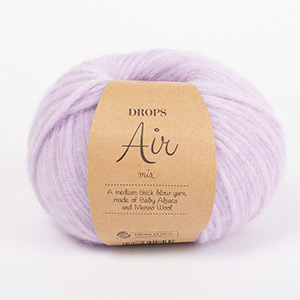
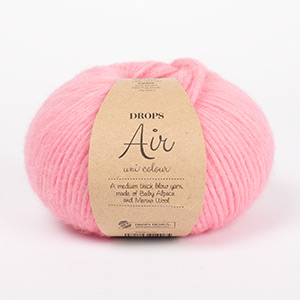























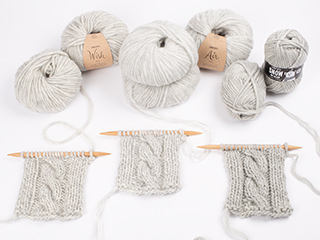




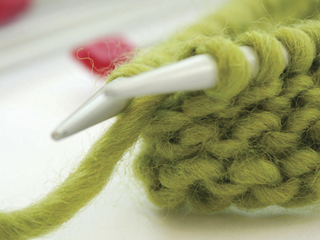





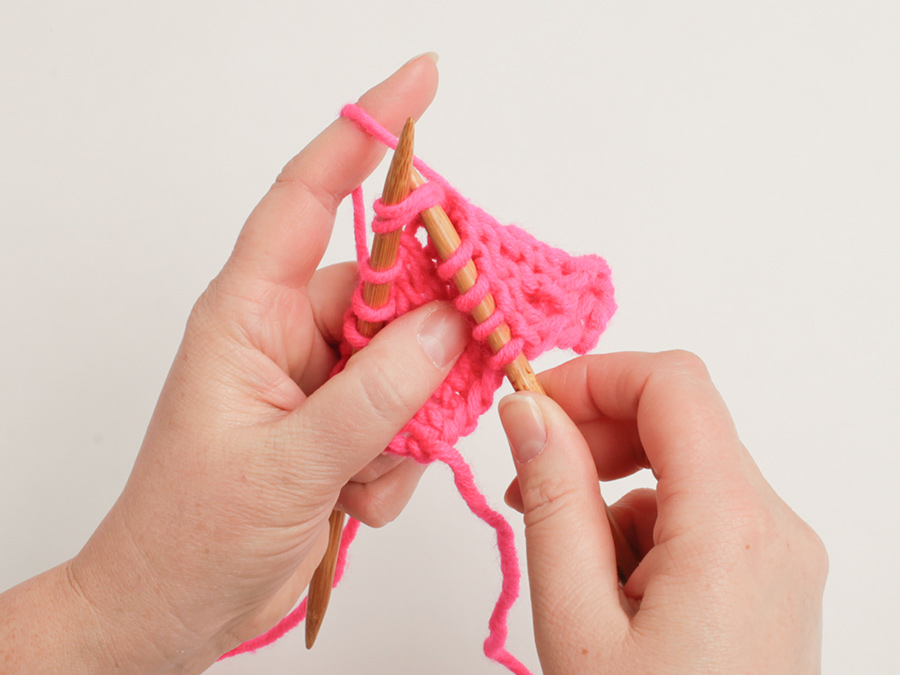








Post a comment to pattern DROPS 217-24
We would love to hear what you have to say about this pattern!
If you want to leave a question, please make sure you select the correct category in the form below, to speed up the answering process. Required fields are marked *.